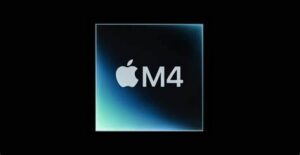Good and bad news for OEMs.
- Android Automotive has finally made it onto the Volvo XC40 marking Android Automotive’s arrival into the mainstream but it’s only the electric version supporting my view that OEMs have a little time to get their houses in order.
- Audi and Volvo announced their intention to use Android Automotive in 2017 and promises were made with regard to imminent launches but so far very little has transpired.
- This led me to conclude that both Audi and Volvo had gotten cold feet with regard to what getting into bed with Google would do to their ability to monetise the digital activities occurring within the vehicle(see here).
- However, the launch of the Polestar II (Polestar is an electric sub-brand of Volvo’s) and the requirement for an electric car to be redesigned from scratch had led me to forecast that the real take-off of fully data capable vehicles has become closely tied to the take-up of EVs.
- There is so much legacy invested in petrol vehicles (ICE) and the infotainment systems that they use, that the OEMs appear to be unwilling to really put this new capability into these vehicles.
- This allows them to prolong their current business models for as long as possible while also having the advantage of including digitisation as part of the complete vehicle redesign that is required to make a decent EV.
- Because EVs are going to be very low volume for some time to come, this gives the OEM the opportunity to see how Android Automotive will work for them without having to make a big commitment to volume over the next few years.
- However, this is a dangerous game because should users decide that they love Android Automotive with Google services embedded in the dashboard more than whatever the OEMs can come up with, then they will have lost whatever power that they had.
- In this instance, they will become nothing more than handsets on wheels and while the exit of Dyson, Tesla’s lack of profitability and NIO’s struggles indicates that making EVs is harder than it looks, it is still a lot easier than making ICE vehicles.
- With Android Automotive, vehicle makers will be left earning a tiny fraction of the digital service opportunity in the vehicle with the lion’s share going to Google.
- I suspect that this is exactly Google’s strategy and that it sees vehicles like handsets in that they are just another device through which to deliver its ecosystem.
- Currently, the OEMs have a lock on the vehicle data that makes these services possible, but the more consumers begin to prefer Google in the vehicle, the weaker this lock becomes.
- Some OEMs might say that a small slice of something is better than a big slice of nothing, but a small slice is not going to be enough to rescue them from the collapse in vehicle demand that I forecast once EVs have gone mainstream.
- This is why I think they will be better off seeking an alternative that lets Google in, to some degree, but keeps all the control points firmly in their hands.









